Bartolomeo Colleoni: Most Respected Mercenary General Of The 15th Century Italy
A. Sutherland - AncientPages.com - From the late Middle Ages until the mid-17th century, Italy was widely known for employing mercenary leaders – condottieri.
In his book "Mercenary Companies and the Decline of Siena", William Caferro wrote:
 Statue of Bartolomeo Colleoni. Andrea Verrocchio (1435–1488). Image credit: Novellón - CC BY-SA 4.0
Statue of Bartolomeo Colleoni. Andrea Verrocchio (1435–1488). Image credit: Novellón - CC BY-SA 4.0
"Of the many calamities that befell Europe in the fourteenth century, there was none worse than the raids of the great mercenary companies. Composed of professional soldiers, restless knights, and assorted adventurers from all over Europe, the companies were private armies, available for hire to the highest bidder.
They fought in France in the battles of the Hundred Years' War, in Spain...and in wars in German lands. When not fighting, they sustained themselves by raiding cities and towns with which they did not quarrel, plundering the countryside, and extorting money from local governments... The contemporary French chronicler Jean de Venette called them "men with no right and no reason other than their passion, iniquity, malice, and hope of gain..."
In the fourteenth century, one of the most famous figures was Sir John Hawkwood (c.1323–1394) or "John Sharp," a fourteenth-century English soldier and condottiero, whose achievements made him a man shrouded in myth in both England and Italy.
Another one was Bartolomeo Colleoni (1400 - 1475)', an Italian mercenary and one of the most prominent Italian commanders in the 15th century. He was well-known for his fidelity and solidity among the mercenaries; he was also a great patron of artists.
Turbulent Childhood And Youth Of Bartolomeo
Bartolomeo Colleoni was born in a castle in Solza near Bergamo, located about 300 km from Venice, northern Italy.
When he was nine years old, his father, a local nobleman known for his cruel nature, was stabbed in a dispute by his cousin Giovanni, not far from home, at the castle of Trezzo d'Adda. He lived with his mother and servants in a looted castle from then on.
At 14, he began serving as a bollard at the court of Philippe Arcelli of Piacenza; he never returned to Solza. He learned martial art from soldiers until he formed his infantry and cavalry unit to fight as a mercenary who would pay more.
 The equestrian statue of Bartolomeo Colleoni by Verrocchio in Venice. Image credit: Didier Descouens - CC BY-SA 4.0
The equestrian statue of Bartolomeo Colleoni by Verrocchio in Venice. Image credit: Didier Descouens - CC BY-SA 4.0
In the first half of the fifteenth century, Venice began to subordinate the adjacent areas of north-eastern Italy, growing to challenge its long-lasting rival – Milan.
Italy was, moreover, divided into several small kingdoms or urban republics waging endless wars and often changing alliances. These numerous wars demanded the participation of professionals, both mercenary soldiers and their military leaders - 'condottieri.'
On his first major expedition, Colleoni set off to central and southern Italy in 1418 under the command of Braccia da Montone, one of the greatest of the condottieri who dominated Italian history in the 14th and 15th centuries. Then he continued to train as a soldier, taught art and tactics of war, and entered the service of various condottieri, participating in several campaigns.
His specialty was fighting in the mountains.
Colleoni Enters Direct Service Of The Venetian Republic
An important turning point in Colleoni's life and career came when he entered the service of Francesco Bussone (called "Count of Carmagnola")' who, despite his successes, also made some 'mistakes.' There was evidence that he wanted to change the front plotting against Venice. Carmagnola was seized, imprisoned, and brought to trial for treason against the republic. Sentenced to death, he was beheaded in Venice on May 5, 1432.
Colleoni, on the other hand, entered the direct service of the Venetian Republic, which represented the crucial phase of his career.
He recaptured many towns and districts for Venice from the Milanese and, for a long time, continued to serve the Venetians and win battles at Brescia, Verona, and on the Lake of Garda.
Malpaga Castle And Many Good Deeds
In 1456, the famous Captain-General of the Venice Republic Bartolomeo Colleoni decided to buy Malpaga's Borough 100 gold ducats, aiming to turn it into his private house and the center of his domain. His formidable castle at Malpaga was both beautifully decorated with frescoes and fortified. It became the Commander's headquarters and witnessed numerous outstanding historical events, hosting renowned figures including Charles II, Duke of Burgundy, and Christian I, king of Denmark.
Like many others, Colleoni also changed sides. However, no act of treachery is attributed to him, nor did he subject the territories he passed through to the rapine and robbery so often practiced by other soldiers of fortune.
He participated in many military encounters and led troops to many victories, which helped him to gain international fame and fame that other Italian commanders at the time could undoubtedly envy him.
Involvement In Charity And Agricultural Improvements
When not fighting, Colleoni devoted his time to introducing agricultural developments on the vast estates which the Venetians had granted him and to charity.
In 1466, Bartolomeo founded an institution in Bergamo that works to this day to support girls from low-income families. Having many illegitimate children, he used to give dowries to young girls who wanted to marry.
In the 15th century, Italy was the site of political attacks and murders, poisonings, and betrayals. Maybe, for fear of assassins, Colleoni's bedroom had no fireplace through which the bombers could enter the room. He was safe there. His Malpaga Castle was protected by a wide moat and built as a highly inaccessible fortress.
It was able to resist multiple attacks and battles.
When Venice was at peace, Colleoni remained at the disposal of the republic in times of war until his death. After being Venetian captain-general for twenty years, he died on July 3, 1475.
'He who serves a republic serves no one' was one of many epitaphs written in memory of Colleoni.
Written by - A. Sutherland - AncientPages.com Senior Staff Writer
Copyright © AncientPages.com All rights reserved. This material may not be published, broadcast, rewritten or redistributed in whole or part without the express written permission of AncientPages.com
Expand for referencesReferences:
Urban W. Medieval Mercenaries
Mallett, Michael. Mercenaries and their Masters
More From Ancient Pages
-
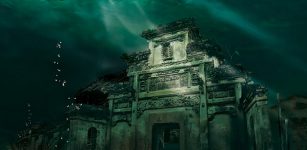 Ancient Underwater ‘Lion City’ Rests Beneath The Thousand Island Lake
News | Feb 11, 2014
Ancient Underwater ‘Lion City’ Rests Beneath The Thousand Island Lake
News | Feb 11, 2014 -
 Ancient Entrance Gate Found In Biblical City Of Bethsaida (Zer) Where Jesus Performed His Deeds Of Power
Archaeology | Jul 11, 2018
Ancient Entrance Gate Found In Biblical City Of Bethsaida (Zer) Where Jesus Performed His Deeds Of Power
Archaeology | Jul 11, 2018 -
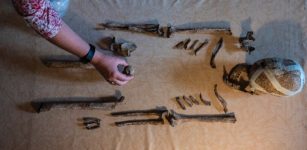 Who Was The The Mysterious Lady Of Bietikow And What Had She In Common With Ötzi Iceman?
Archaeology | Nov 6, 2020
Who Was The The Mysterious Lady Of Bietikow And What Had She In Common With Ötzi Iceman?
Archaeology | Nov 6, 2020 -
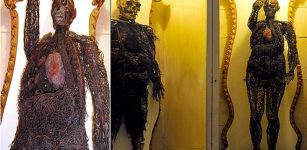 Incredible Anatomical Human Machines – Two Fleshless Bodies Mystery
Featured Stories | Jul 24, 2018
Incredible Anatomical Human Machines – Two Fleshless Bodies Mystery
Featured Stories | Jul 24, 2018 -
 Incredible Treasure Discovered In The Secret Chamber Of The Great Pyramid 1,200 Years Ago May Offer Proof Of Long-Lost Scientific Knowledge
Ancient Mysteries | Dec 31, 2018
Incredible Treasure Discovered In The Secret Chamber Of The Great Pyramid 1,200 Years Ago May Offer Proof Of Long-Lost Scientific Knowledge
Ancient Mysteries | Dec 31, 2018 -
 Well-Preserved 1,000-Year-Old Ulfberht Sword Found In The Wisla River, Poland
Archaeology | Jan 23, 2024
Well-Preserved 1,000-Year-Old Ulfberht Sword Found In The Wisla River, Poland
Archaeology | Jan 23, 2024 -
 King Tabnit’s Sarcophagus And Its Surprising Forever-Lost Secret
Featured Stories | Jul 30, 2023
King Tabnit’s Sarcophagus And Its Surprising Forever-Lost Secret
Featured Stories | Jul 30, 2023 -
 More Than 60,000 Ancient Maya Structures Obscured By Inaccessible Forest Revealed By LIDAR
Archaeology | Sep 29, 2018
More Than 60,000 Ancient Maya Structures Obscured By Inaccessible Forest Revealed By LIDAR
Archaeology | Sep 29, 2018 -
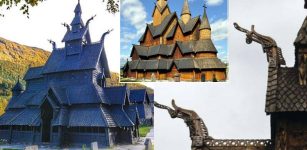 Unique Wooden Stave Churches Were Built Without Nails – Remarkable Technology Helped Them Survive
Featured Stories | Nov 15, 2022
Unique Wooden Stave Churches Were Built Without Nails – Remarkable Technology Helped Them Survive
Featured Stories | Nov 15, 2022 -
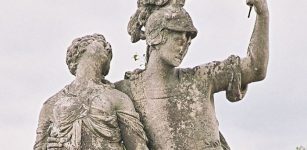 Tyrannical Tarquin The Proud: The Seventh And Last King Of Rome Was Banished
Featured Stories | Jan 28, 2020
Tyrannical Tarquin The Proud: The Seventh And Last King Of Rome Was Banished
Featured Stories | Jan 28, 2020 -
 Mysterious Engraved Bones Discovered On The Island Of Janitzio In Michoacán, Mexico
Archaeology | Jun 25, 2024
Mysterious Engraved Bones Discovered On The Island Of Janitzio In Michoacán, Mexico
Archaeology | Jun 25, 2024 -
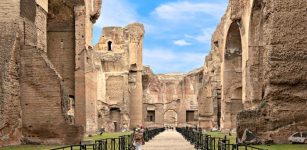 Baths Of Caracalla: Italian Antique Thermae Complex For Leisure, Gossip, Business And Socialisation
Featured Stories | Dec 4, 2023
Baths Of Caracalla: Italian Antique Thermae Complex For Leisure, Gossip, Business And Socialisation
Featured Stories | Dec 4, 2023 -
 Deadly Catastrophe In Pompeii And An Overlooked Piece Of The Well-Researched Disaster
Archaeology | Jul 18, 2024
Deadly Catastrophe In Pompeii And An Overlooked Piece Of The Well-Researched Disaster
Archaeology | Jul 18, 2024 -
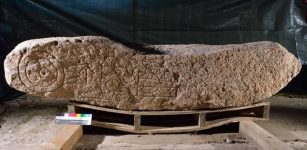 Dandaleith Stone: Scotland’s Rare Symbol Stone Of The Picts – Will It Be Deciphered Now?
Ancient Symbols | Jan 21, 2016
Dandaleith Stone: Scotland’s Rare Symbol Stone Of The Picts – Will It Be Deciphered Now?
Ancient Symbols | Jan 21, 2016 -
 Brihadeshwara Temple – Outstanding Example Of Chola Architecture In Tamil Nadu, India
Featured Stories | Aug 26, 2021
Brihadeshwara Temple – Outstanding Example Of Chola Architecture In Tamil Nadu, India
Featured Stories | Aug 26, 2021 -
 Visit The Palace Where Alexander The Great Was Born In Pella
Archaeology | Oct 21, 2020
Visit The Palace Where Alexander The Great Was Born In Pella
Archaeology | Oct 21, 2020 -
 The Egyptian Dream Book Reveals Ancient Predictions Of The Future
Egyptian Mythology | Jun 6, 2020
The Egyptian Dream Book Reveals Ancient Predictions Of The Future
Egyptian Mythology | Jun 6, 2020 -
 The Inca Empire Was Powerful And Well-Organized – Why Were They So Successful?
Ancient History Facts | Sep 21, 2020
The Inca Empire Was Powerful And Well-Organized – Why Were They So Successful?
Ancient History Facts | Sep 21, 2020 -
 3,800-Year-Old Cuneiform Clay Tablet With Agreement To Purchase A City Discovered In An Ancient Tumulus In Turkey
Archaeology | Aug 11, 2023
3,800-Year-Old Cuneiform Clay Tablet With Agreement To Purchase A City Discovered In An Ancient Tumulus In Turkey
Archaeology | Aug 11, 2023 -
 Preserve Elfdalian: Sweden’s Secret Forest Language From The Viking Era
Civilizations | May 21, 2015
Preserve Elfdalian: Sweden’s Secret Forest Language From The Viking Era
Civilizations | May 21, 2015
